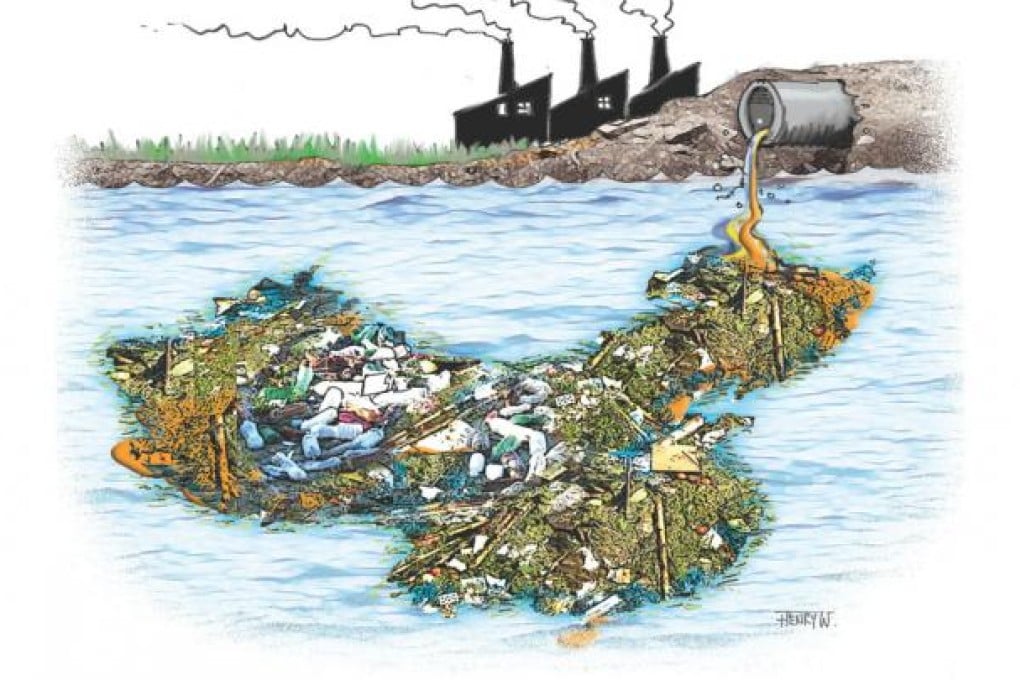China's deadly water problem
Matthew Garland says the dead pigs found floating in a Shanghai river are only the tip of China's massive water problem, which the government is already desperate to tackle

There is an old saying in Chinese culture that the appearance of a fat pig at the front door augurs abundance and good fortune. The sight of a bloated one floating dead down the nearest river portends something else entirely. In the past two weeks, more than 16,000 dead pigs have been fished out of the Huangpu River, near Shanghai, and its tributaries. Outraged Chinese citizens have decried government negligence of the environment, flooding online forums with photos of riverbanks dotted with puce-coloured carcasses.
The Huangpu's cavalcade of swine follows on the heels of a recent factory spill in Shanxi province that resulted in nine tonnes of the potential carcinogen aniline being dispersed in the Zhuozhang River. Factory officials waited five days to report the spill, forcing neighbouring Handan city to temporarily cut off drinking water to a million people.
These recent episodes are but the latest in a long list of incidents that testify to China's growing water problem. As much as 70 per cent of Chinese rivers and lakes are polluted from industrial facilities like chemical and textile plants. "Cancer villages" have sprouted along waterways across the country, by-products of the ugly reality that 300 million Chinese in rural areas lack access to safe drinking water. Perhaps even more unnerving are the findings of a recent report by the China Geological Survey estimating that 90 per cent of Chinese cities are tapped into polluted groundwater supplies; groundwater in two-thirds of those cities is considered "severely polluted".
This discontent has not been lost on China's new generation of top leadership, which has pledged to more aggressively tackle China's pollution challenges in coming years. Recalling a recent visit to the heavily polluted Lake Tai, newly installed president Xi Jinping quipped this month that "the standard that internet users apply for lake water quality is whether the mayor dares to jump in and swim". Xi was referring to recent news that residents in Zhejiang province had challenged local government officials to swim in polluted waterways for up to 300,000 yuan (HK$370,000).
Pollution, however, is only half of the country's water problem. Not only is China's water toxic, it is also comparatively scarce. China supports 20 per cent of the world's population on only 6 per cent of the world's water; freshwater reserves declined by 13 per cent between 2000 and 2009 alone.
The country's most industrial regions are some of the driest, with 45 per cent of the country's gross domestic product produced in water-scarce provinces such as Hebei, Shandong and Shanxi. Some 24,000 villages have been abandoned because of the desertification effects of the Gobi desert advancing eastwards. Moreover, water scarcity is not unique to China's arid western provinces. In Beijing, the amount of water available per person is just one-tenth of the UN standard of 1,000 cubic metres; across the country more than two-thirds of cities have water shortages.
Furthermore, chronic droughts in important agricultural regions are complicating the government's focus on assuring food security. Beijing has long tried to maintain a balancing act between the spread of industry, continued support for agriculture and ensuring a clean supply for consumption by 1.3 billion people. As water supplies dwindle, competition may arise over which is given priority. All three are needed to ensure stability.